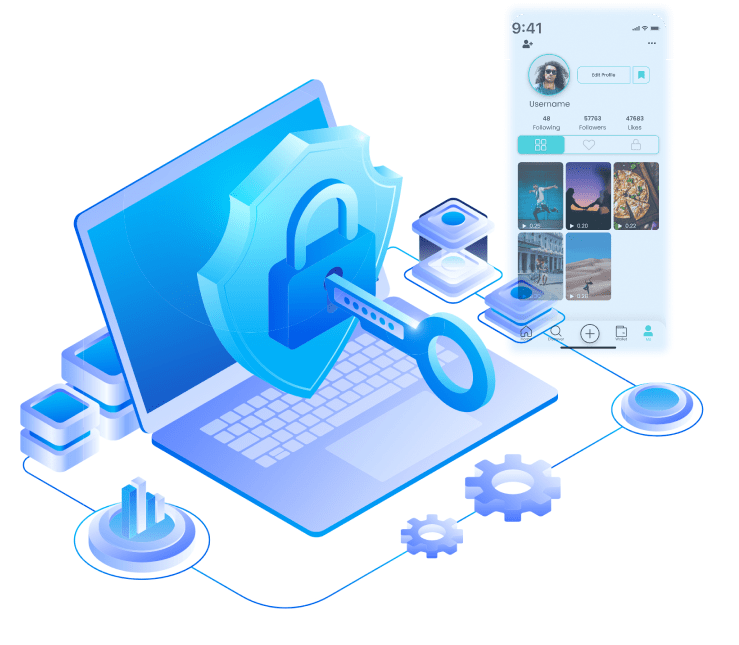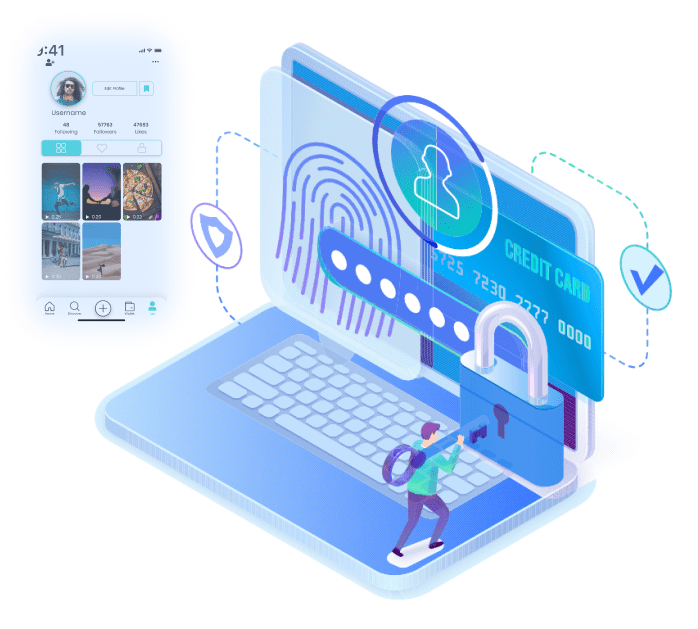Transform your video-sharing approach: Uncover the potential of Decentralized Video Sharing Platforms
Unleash the full potential of your video content by partnering with a leading provider of decentralized video-sharing platforms. These platforms operate on blockchain technology and provide a secure and transparent way for creators to share their content and for users to view it. With a peer-to-peer (P2P) network, transferring files securely is effortless. Our top-notch solutions offer rapid time-to-market, delivering unparalleled efficiency and flexibility to transform your video-sharing approach with unrivalled expertise.





Freedom of speech and expression
One of the benefits of using a peer-to-peer network for video sharing is that it enhances the freedom of speech and expression of content creators. Unlike traditional platforms that rely on third-party servers, decentralized platforms give more control to the creators over their content. Post videos without fear of being censored or restricted by the platform’s policies or algorithms. This allows creators to express themselves more freely and authentically on decentralized platforms.

Increased security

The use case of decentralized video-sharing platforms is to enhance the security of online video content. Unlike traditional platforms that store videos on a central server, decentralized platforms use peer-to-peer (P2P) technology, which distributes the videos across multiple nodes in a network. This makes it more difficult for hackers to steal or disrupt data, as they would have to compromise many nodes instead of one. Additionally, P2P technology also reduces the risk of censorship or manipulation by third parties, as no single entity has control over the video content.
Improved privacy
Decentralized platforms do not have a single point of control or failure, protecting user data from third parties. Users can remain anonymous and control content access. Decentralized video-sharing platforms protect users from censorship and manipulation, allowing them to create and share videos on any topic without fear of being silenced or de-platformed. This empowers users to have more freedom and control over their online video experience.

Reduced costs

Decentralized video-sharing platforms do not require expensive infrastructure, which means that they can offer their services at a lower cost than traditional video-sharing platforms. This can benefit both content creators and viewers, who can save money on hosting fees and subscriptions. Additionally, decentralized video-sharing platforms can also reduce the risk of censorship and data breaches, as they do not rely on centralized servers that can be hacked or shut down by authorities. Therefore, decentralized video-sharing platforms can provide a more secure and affordable way of sharing and consuming video content online.
Features
Decentralization
The platform is not controlled by a single entity, making it resistant to censorship and manipulation.
Transparent terms & conditions
Users are aware of what they agree to, promoting trust and transparency.
Improved search algorithms
Content discovery is easier for users, improving their experience.
Privacy-focused
Fewer user data is collected, protecting privacy and reducing data breach risks.
Alternative payment systems
Creators have more financial freedom through options like cryptocurrencies.
Uncensored
All content can be shared, promoting free speech and expression.
Secure
The platform is less vulnerable to attacks than centralized platforms, protecting user data and content.
Scalable
The platform can meet the demands of a growing user base.
Resilient
The platform remains accessible even during high demand or technical difficulties.
Efficient
Less infrastructure is required than centralized platforms, reducing costs and improving performance.
Community-driven
Users contribute to the platform’s development and growth, leading to a more engaged user base.
Incentivized participation
Users are rewarded for uploading content or engaging with others, encouraging active participation and platform growth.

Cyborpay
Crypto Wallet and Payments
Crypto Wallet & Payments
- Turkey

Galaxii
Decentralized Video & NFT Platform
Decentralized Social Media & Community
- USA

WEMP
Women Empowerment Token
Decentralized Finance
- USA

Autobet
Decentralized Lottery & Gaming
Lottery & Gaming
- New Guinea

Decentralized Identity
SSI Based Identity Management
Decentralized Identity
- USA

Artistry
NFT Marketplace for Artists
Asset Management & NFTs
- USA

Smart Ballot
Blockchain Based Voting System
Voting & DAO
- USA

Diamond Supply Chain
Blockchain Based Supply Chain
Supply Chain
- UK

Followgoa
Experiential Travel and Tourism
Travel & Tourism
- India
EXCELLENT
EXCELLENT

Autobet

RateMyGrass

SparkLand

Diamond Supply Chain

BookMyTrek

Cyborpay

Weedcommerce









FAQs
What is decentralized video sharing?
Decentralized video sharing is a form of Peer-to-Peer (P2P) video streaming that uses blockchain technology. Unlike centralized platforms, media content in a P2P network is transmitted directly from content creators to the audience without the involvement of intermediaries.
What are NFTs and how are they used in decentralized video sharing?
NFTs (Non-Fungible Tokens) are unique digital assets that represent ownership of a specific piece of content. In the context of decentralized video sharing, NFTs can be used to represent ownership of video files. This allows content creators to prove and protect their ownership rights, and to buy, sell and trade their content in the form of NFTs.
What are the benefits of using NFTs for video content?
Using NFTs for video content allows creators to have greater control over their work. They can prove and protect their ownership rights, and monetize their content by selling or trading NFTs. This can provide new revenue streams for creators and help them earn cryptocurrency for their work.
How does one convert a video file into an NFT?
To convert a video file into an NFT, the creator must first upload their video to a decentralized video-sharing platform that supports NFTs. The platform will then guide the creator through the process of tokenizing their video file and converting it into an NFT.
What are some other use cases for NFTs?
In addition to being used for video content, NFTs have many other use cases. They can be used to represent ownership of digital art, music, collectables, and even virtual real estate. NFTs can also be used for gaming, where they can represent in-game items or characters.
What are some benefits of using decentralized video-sharing platforms?
Decentralized video-sharing platforms offer several benefits over traditional centralized platforms. They provide enhanced privacy, greater control, increased transparency and diversity, and a better user experience through decentralized content distribution. Users have full control over their content and can be sure that it will not be taken down by intermediaries.
How does a decentralized video-sharing platform work?
Decentralized video-sharing platforms use a Peer-to-Peer (P2P) network to transmit media content directly from content creators to the audience without the involvement of intermediaries. This is made possible by the use of blockchain technology, which provides a secure and transparent network for content distribution.


